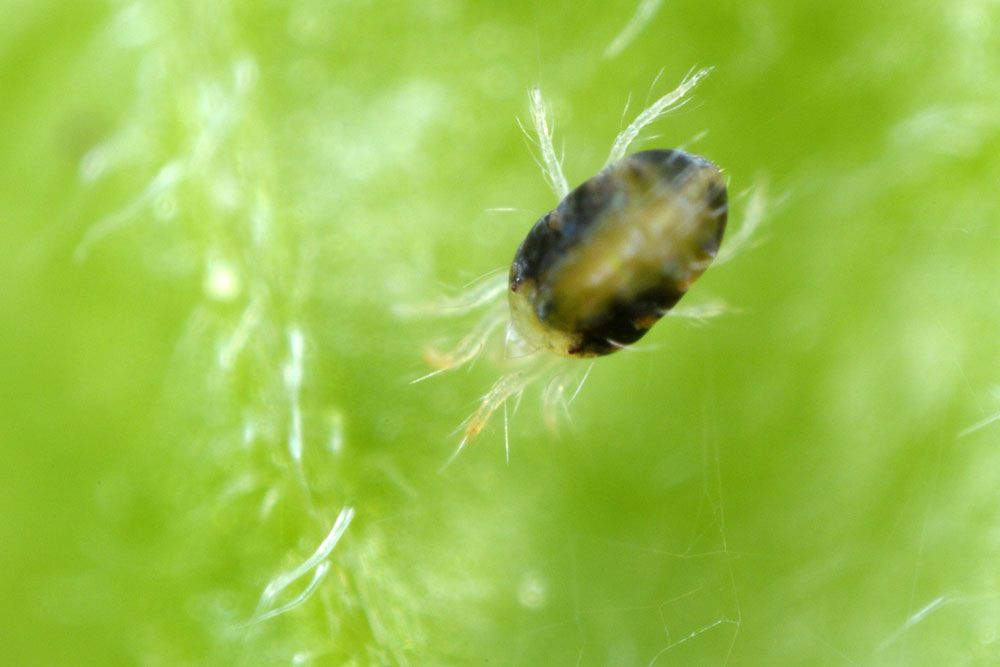
Twospotted Spider Mite – Tetranychus urticae
Two spotted Spider Mite – Tetranychus urticae
Common Name: Two spotted Spider Mite
Latin Name: Tetranychus urticae
Appearance:
- Two spotted spider mite eggs are round, transparent to pale green, and glossy. They are most commonly seen on the undersides of leaves, where adults feed. Adults spin webbing to connect them to leaves.
- The first instar is a six-legged stage termed a larva that looks and feels like an adult. The mature mite has eight legs and is green to brown in appearance.
- Males are smaller than females and have slimmer pointed abdomens. The spines of both sexes are sparse, with two dark pigmented patches on their backs.
- Food particles can be visible through the body wall in these pigmented spots—the mature female of the two-spotted spider mite measures about 1/64″ in length.
Host plant:
Two spotted spider mites feed on over 180 wild, ornamental, vegetable, and fruit plants species
Territory:
Two spotted spider mites are widely distributed in the United States
Damages caused by Two spotted Spider Mite:
Two spotted mites suck plant cell contents, stippling them with thin pale green mottling at first. Stippling intensifies as feeding continues, and leaves become yellow with bronzed or brown regions; damaged leaves usually fall. The undersides of leaves may have several mite-cast skins, and the webbing on foliage is unsightly. Plants can become severely stunted and perish when enormous mite populations are allowed to eat.
Life history and habits:
Spider mite development varies by species, but the usual life cycle is as follows. The eggs are wrapped in delicate silk webbing and hatch in about three days. The egg, larva, two nymphal stages (protonymph and deutonymph), and adult make up the life cycle. The time it takes from egg to adult depends heavily on temperature. Spider mites finish their growth in five to twenty days under ideal conditions (about 80oF). Every year, there are several overlapping generations. The mature female lives for two to four weeks and can deposit hundreds of eggs during her lifetime.
